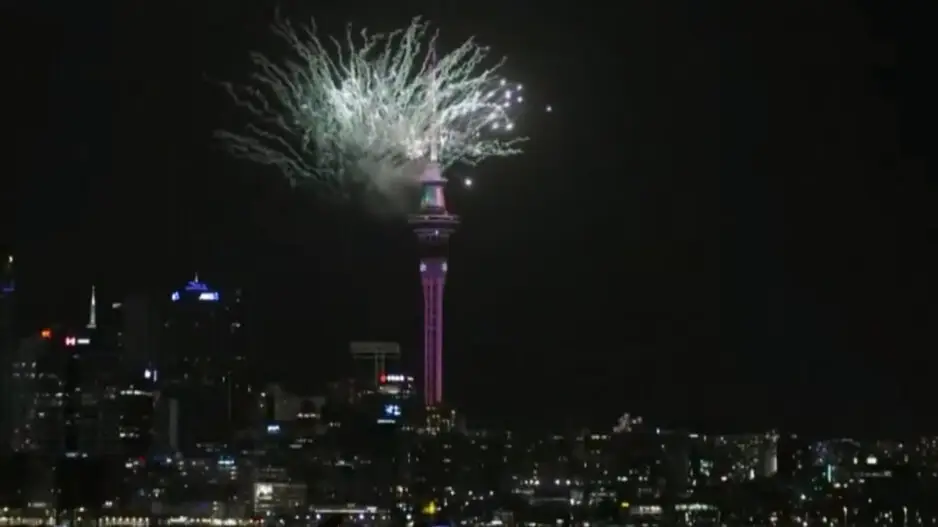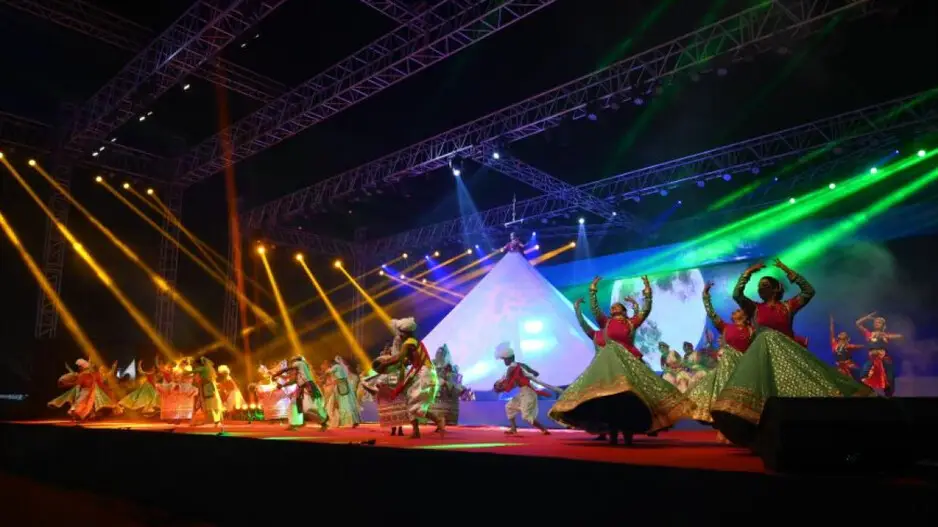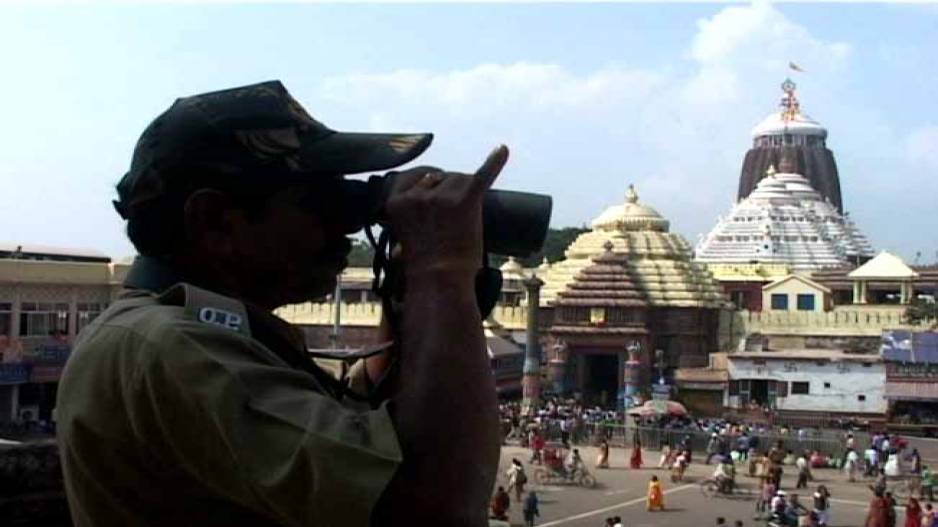/odishatv/media/post_attachments/uploadimage/library/16_9/16_9_0/recent_photo_1736750332.webp)
Next in 2169! Why this Maha Kumbh Mela so special? Mythology to science, everything explained
Tens of thousands of devotees not just from India but from across the world flocked to the Triveni Sangam in Uttar Pradesh's Prayagraj to take a holy dip during the Maha Kumbh Mela as the biggest spiritual gathering in the world begun with the 'Shahi Snan' on the auspicious occasion of Paush Purnima on Monday.
Despite the freezing waters during the cold winter season, people from all over the world, including foreign devotees from South Africa, New Zealand, Russia, Brazil and many other countries took a dip in the Triveni Sangam, the sacred confluence of the rivers Ganga, Yamuna, and the 'mystical' Saraswati.
#MahaKumbhMela2025 | Prayagraj, Uttar Pradesh: Thousands of devotees take a holy dip in Triveni Sangam - a sacred confluence of rivers Ganga, Yamuna and 'mystical' Saraswati as today, January 13 - Paush Purnima marks the beginning of the 45-day-long #MahaKumbh2025
(Source:… pic.twitter.com/HE7sV7qD3C
— ANI (@ANI) January 13, 2025
Prayagraj, in Uttar Pradesh, is hosting the Maha Kumbh this year, or the Poorna Kumbh, held every 12 years. However, do you know why devotees so huge in numbers celebrate Kumbh Mela?
So, let us understand what actually is the Kumbh Mela, and why is it held in four cities periodically? What is Ardh Kumbh and Maha Kumbh? What is the origin of this festival, and why do millions attend it?
Kumbh Mela: Mythology
As per mythology, the Sanskrit word Kumbh means pitcher (pot). The story goes that when Devas (gods) and Asuras (demons) churned the ocean, Dhanvantri emerged carrying a pitcher of amrita, or the elixir of immortality. To make sure the Asuras don’t get it, Indra’s son, Jayant, ran off with the pot. The Sun, his son Shani, Brihaspati (the planet Jupiter), and the Moon went along to protect him and the pot.
As Jayant ran, the amrita spilt at four spots: Haridwar, Prayagraj, Ujjain, and Nashik-Trimbakeshwar. He ran for 12 days, and as one day of the Devas is equal to one year of humans, Kumbh Mela is celebrated at these locations every 12 years, based on the relative positions of the Sun, the Moon, and Jupiter.
#WATCH | Prayagraj | Jitesh Prabhakar, originally from Mysore and now a German citizen along with his wife Saskia Knauf and a baby boy, Aditya arrive at #MahaKumbh2025
Jitesh says, "...It doesn't matter if I live here (in India) or abroad - the connection should be there. I… pic.twitter.com/vPhpoJNvh1
— ANI (@ANI) January 13, 2025
Prayagraj and Haridwar also hold the Ardh-Kumbh (ardh means half), every six years. The festival held after 12 years is called the Poorna Kumbh, or the Maha Kumbh.
All four places are located on the banks of rivers — Haridwar has the Ganga, Prayagraj is the sangam or meeting point of Ganga, Yamuna and the mythical Saraswati, Ujjain has the Kshipra, and Nashik-Trimbakeshwar the Godavari.
It is believed that taking a dip in these rivers during Kumbh, amid the specific alignment of the heavenly bodies, washes away one’s sins and accrues punya (spiritual merit).
Kumbh Mela: History
The Skanda Purana is believed to be the proof of Kumbh Mela’s antiquity. Many also believe that Chinese pilgrim Xuanzang (Hiuen Tsang) mentioned the fair in Prayag in the 7th century. Furthermore, a book published by Gorakhpur’s Gita Press, called Maha Kumbh Parva, claims that the Rig Veda has shlokas mentioning the benefits of participating in the Kumbh Mela.
#WATCH | Prayagraj | A devotee from South Africa's Cape Town at #MahaKumbh2025, Nikki says, "It's very very powerful and we are very blessed to be here at river Ganga..." pic.twitter.com/Zv9d8OkQjV
— ANI (@ANI) January 13, 2025
Kumbh Mela: Types
Maha Kumbh Mela: It is held only in Prayagraj. It comes in every 144 years or after 12 Purna (Complete) Kumbh Mela.
1. Purna Kumbh Mela - It comes every 12 years. Mainly held at 4 Kumbh Mela Places in India i.e. Prayagraj, Haridwar, Nashik and Ujjain. It rotates every 12 years at these 4 places.
2. Ardh Kumbh Mela - It means Half Kumbh Mela which is held every 6 years in India only at two places i.e. Haridwar and Prayagraj.
3. Kumbh Mela - Held at four different places and is organised by the state governments. Millions of people participate with spiritual enthusiasm.
4. Magh Kumbh Mela - It is also known as Mini Kumbh Mela which is held annually and only at Prayagraj. It is organised in the month of Magh according to the Hindu Calendar. Unlike regular Kumbh Melas, which occur every 12 years at four sacred locations—Prayagraj, Haridwar, Ujjain, and Nashik—the Maha Kumbh Mela is a rare event that happens once every 144 years.
Why This Maha Kumbh Mela So Special?
Speaking on the importance of the Maha Kumbh Mela 2025, chief of TikarMafi ashram, Mahant Harichaitanya Brahmachari told TOI, "It is after 144 years that the positioning of all the four planets is in line, and three hours prior to Amavasya (January 29), importantly, ‘Pukh (also pushya) Nakshatra' will also align with the four planets. Thus, the most auspicious of all the Maha Kumbh in the past 144 years is in 2025."
Hence, the next Maha Kumbh after 2025 will not occur until 2169, making this gathering exceptionally significant for devotees.
Kumbh Mela: Venue
The venue for Kumbh Mela is decided according to the position of the Sun, Moon and Jupiter hold in that period in different zodiac signs.
Prayagraj: The Kumbh Mela is celebrated in UP’s Prayagraj when Jupiter is placed in Taurus and the Sun, Moon is in Capricorn. Prayagraj is situated where the Ganges, Yamuna and Saraswati meet.
Haridwar: Kumbh Mela in Haridwar is celebrated when Jupiter stays in Aquarius, the Sun is in Aries and the Moon in Sagittarius. Haridwar is located along the Ganges River.
Ujjain: When Jupiter is in Leo, the Sun and the Moon in Aries, it is the perfect alignment for Kumbh Mela to be celebrated in Ujjain. Ujjain is located on the Shipra River.
Nashik: Located on the Godavari riverbanks, the Kumbh Mela is celebrated in Nashik when Jupiter is in Leo, and the Sun, the Moon are in Cancer.
Kumbh Mela: Significance
The gathering fosters a sense of community and devotion, uniting millions in a shared spiritual experience that transcends individual differences and celebrates India's rich cultural heritage.
The Maha Kumbh Mela attracts an estimated 40 crore (400 million) pilgrims, significantly more than regular Kumbh Melas, which typically see fewer participants due to their more frequent nature.
Happy 2025! President Murmu, PM Modi and others extend New Year greetings

New Zealand rings in 2025 with dazzling fireworks

Pravasi Bharatiya Divas 2025 in Odisha: A sneak peek into what all happened in the mega convention

Puri police tighten security arrangements for New Year 2025 celebrations

/odishatv/media/agency_attachments/2025/07/18/2025-07-18t114635091z-640x480-otv-eng-sukant-rout-1-2025-07-18-17-16-35.png)

/odishatv/media/media_files/2025/09/22/advertise-with-us-2025-09-22-12-54-26.jpeg)